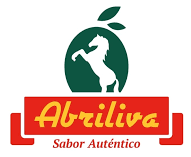In the rapidly evolving world of contemporary design, visual elements are crucial for capturing attention, conveying messages, and establishing aesthetic identity. Modern trends emphasize minimalism, clean lines, and innovative material use, making the choice of framing a significant aspect of overall design harmony. As designers seek to elevate their creations, metallic frames have emerged as a preferred choice for adding sophistication and modernity to various visual compositions.
Historically, framing techniques relied heavily on wood or plastic, which served functional purposes but often lacked the ability to evoke the sleekness or reflective qualities demanded by contemporary aesthetics. Over time, advancements in manufacturing and material science have popularized metallic frames, transforming them into versatile tools for enhancing visual appeal and design narrative.
2. Material and Finish Choices: Why Metallic Frames Stand Out
3. Artistic and Functional Benefits of Metallic Frames
4. Case Study: Modern Art and Design Examples Incorporating Metallic Frames
5. Non-Obvious Perspectives: Cultural and Technological Influences
6. Practical Guidelines for Incorporating Metallic Frames
7. Conclusion
Understanding Visual Appeal: Principles and Psychological Impact
Visual elements in design are not merely decorative; they influence perception and evoke emotional responses. The principles of contrast, balance, and emphasis guide how viewers interpret visual compositions. Frames serve as boundaries that focus attention and create a sense of completeness. When thoughtfully chosen, they can direct the viewer’s gaze, highlight key features, and add layers of meaning.
Psychologically, metallic finishes are strongly associated with attributes such as sophistication, innovation, and modernity. Research in visual psychology indicates that metallic surfaces can evoke feelings of prestige and exclusivity. For instance, a sleek, silver metallic frame around an artwork can elevate its perceived value and draw viewers into a more contemplative engagement.
In practical terms, framing influences how audiences perceive the message; a well-framed object is more likely to be remembered and appreciated. The choice of metallic frames enhances this effect by adding a reflective quality that interacts with ambient light, making the displayed content more dynamic and engaging.
Material and Finish Choices: Why Metallic Frames Stand Out
Metallic frames are distinguished by their durability, unique textures, and reflective properties. Materials such as aluminum, stainless steel, and zinc alloys can be finished with various coatings—matte, polished, brushed, or anodized—to achieve desired aesthetic effects. Their resilience makes them suitable for both indoor and outdoor applications, resisting corrosion and maintaining their appearance over time.
Compared to traditional wood or plastic frames, metallic options offer a sleek, modern look that complements minimalist, industrial, and contemporary styles. For example, aluminum frames with a brushed finish provide a subtle texture that enhances visual interest without overwhelming the content. Their reflective surface can amplify lighting effects, adding depth and vibrancy to the visual presentation.
Furthermore, metallic frames are versatile, fitting seamlessly into various environments—from high-end galleries to corporate offices—by adjusting their finish and color palette. This adaptability makes metallic framing a strategic choice to unify design elements and reinforce brand identity or artistic themes.
The Artistic and Functional Benefits of Metallic Frames
One of the key artistic advantages of metallic frames is their ability to create contrast and draw attention to focal points within a composition. When placed around artwork or decorative objects, metallic borders can make colors appear more vibrant and details more pronounced. For instance, in modern art displays, a metallic frame can serve as a visual boundary that elevates the artwork’s presence.
In addition, metallic frames contribute to creating a sense of depth and dimension. Their reflective surfaces interact with lighting, casting subtle highlights and shadows that add layers of complexity. This effect is especially effective in gallery settings, where controlled lighting enhances the interplay of metallic surfaces and artwork.
From a practical perspective, metallic frames are valued for their longevity and ease of maintenance. Unlike wood, which can warp or stain, metals resist pests and corrosion. They can be cleaned with simple wipes, ensuring that the aesthetic remains pristine over years of display. Their versatility allows integration into various design schemes, from sleek modern to industrial chic.
Case Study: Modern Art and Design Examples Incorporating Metallic Frames
In contemporary galleries and commercial spaces, metallic frames are increasingly used to enhance visual storytelling. For example, the «Gem Trio» design demonstrates how integrating metallic framing can elevate gemstone motifs by providing a reflective, elegant border that complements the clarity and brilliance of the gems themselves. The metallic finish accentuates the themes of sophistication and purity, aligning with psychological associations that elevate perceived value.
This approach contrasts sharply with traditional wooden frames, which might introduce warmth but lack the modern sheen necessary for contemporary aesthetics. By opting for metallic framing, designers can create a clean, high-tech look that resonates with modern audiences, emphasizing clarity and innovation. Such choices are supported by research indicating that metallic finishes enhance perceived quality and emotional engagement.
A comparative analysis shows that metallic frames tend to produce a more striking visual impact, especially under varied lighting conditions, making them ideal for dynamic display environments. For detailed examples, visiting GemTrio 🔥 offers insights into how metallic framing complements gemstone themes in contemporary design.
Non-Obvious Perspectives: Cultural and Technological Influences on Metallic Frame Adoption
Cultural perceptions of metallic finishes vary globally. In Western cultures, silver and gold are often symbols of wealth and prestige, influencing their widespread use in luxury branding and high-end art displays. In contrast, Asian regions may associate metallic hues with prosperity and modernity, integrating them into urban and corporate design schemes.
Technological advances have played a pivotal role in expanding metallic framing options. Innovations such as laser cutting, electroplating, and anodization enable precise, customizable finishes that were previously unattainable. These methods allow for intricate designs, color variations, and environmentally friendly processes, aligning with sustainability goals.
Looking ahead, the development of sustainable metals—like recycled aluminum—and adaptive manufacturing techniques point toward an increasingly eco-conscious approach. The integration of such materials into metallic frames offers not only aesthetic benefits but also aligns with broader trends in sustainable design.
Practical Guidelines for Incorporating Metallic Frames into Modern Designs
Choosing the right metallic finish depends on the overall design theme. For sleek, contemporary spaces, polished or anodized finishes in silver or black are effective. For warmer tones, brushed bronze or gold can add richness without overpowering the content. Consider the environment’s lighting conditions; reflective surfaces can enhance brightness but may require controlling glare.
Balancing metallic frames with other visual elements is essential for harmony. Pairing metallic borders with matte backgrounds or soft textures can prevent visual overload. When integrating elements like the «Gem Trio» motif, ensure the metallic frame complements the gemstones’ clarity and enhances their brilliance without causing distraction.
Practical tips include testing different finishes in situ, considering the scale of the frame relative to the content, and maintaining consistency across multiple displays. These strategies help create a cohesive, impactful visual presentation that leverages the unique qualities of metallic framing.
Conclusion: The Transformative Power of Metallic Frames in Modern Visual Communication
«Metallic frames do more than enclose; they elevate, define, and deepen the viewer’s emotional connection to visual content.»
In summary, metallic frames are a powerful tool for enhancing both the aesthetic and functional qualities of modern design. Their ability to reflect light, convey sophistication, and adapt to various styles makes them invaluable in contemporary visual communication. When paired with thoughtful design principles, these frames can transform simple objects into captivating focal points, fostering a sense of clarity and refinement.
As materials and manufacturing technologies continue to evolve, the potential for innovative metallic framing options expands. Embracing these advances allows designers to craft impactful, sustainable, and emotionally resonant environments—ensuring that metallic frames remain a cornerstone of modern design for years to come. Exploring such possibilities can lead to creations that are not only visually striking but also meaningful and enduring.


